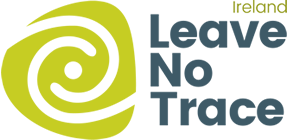Invasive species are a constant threat to our own native species and habitats. It is not that the species we consider invasive are inherently bad of course. They have their place as part of a healthy ecosystem in our world, that place is just not in Ireland. Just as the grey squirrel has caused huge problems in Ireland for our native red squirrel, if our red squirrel were to find itself in a region it doesn’t belong in, it could then become the same type of problem there as the grey is here.
So how do we protect our precious native species and habitats?
1. Knowledge
The most important tool in any toolkit is knowledge. Very little can be achieved without it and with enough of it, people can do anything. By learning about what species are invasive and what they look like we can use the exceptionally effective method of reducing their spread, avoidance. By avoiding invasive species as much as possible we dramatically reduce the risk or carrying unexpected hitchhikers to new sites and unintentionally spreading them.
2. Actions
Knowing and avoiding every single invasive species may be a big ask. So when we use the outdoors the best thing, we can do is assume we did in fact come in contact with an invasive species. So as much as possible we want to follow these four simple steps. Doing so will ensure that even if we do have an invasive hitchhiker tagging along, we won’t be the cause of any further spread. These steps are:
- Check
Always check your shoes, boots, tyres, equipment at the end of a visit to the outdoors. Ideally, this is before you leave but as long as you check before any of the above-mentioned gear or equipment goes to a new site this should be okay. You are checking for any sign of invasive species. This could be mud, seeds, leaves, shells even animals. If your equipment doesn’t look clean, then there is only one thing to do. - Clean
You guessed it, clean. Clean everything you can. Shoes/boots, boats, jackets, fishing equipment, bike tyres, life jackets etc. Try to brush or scrub off any visible material on-site and give the equipment a good wash when storing it away. It should look clean with no visible material present. - Dry
Once cleaned, dry your equipment for at least forty-eight hours. This is an important step. Drying after cleaning will ensure that as close to nothing as reasonably possible will be left alive on the equipment used. It is much more difficult for invasive species to survive in a dry environment than a wet one. - Disinfect
Finally, if full drying is not possible or if you want to be extra cautious, disinfect the equipment after use. This should ensure all but the hardiest of species cannot be spread from one site to another.
If we all follow the Check, Clean, Dry, *Disinfect method we can certainly sleep easier knowing we have done everything in our power to take personal responsibility in protecting the outdoor spaces we love. Good biosecurity is easy once we get into a routine.
3. Spread The Word
Now that we are doing everything, we can help prevent the spread of invasive species and protect our environment, all we need to do is get other people involved as well. If we share the Check, Clean, Dry, *Disinfect method with our family, friends, co-workers, club members, and teams then not only reducing the spread of invasive species but removing them entirely from Ireland can become a tangible possibility.
You can help spread the word by sharing this campaign via social media (you can also share it when chatting to people in person as well).
To learn more about invasive species across the island of Ireland and how you can do your part to help visit the sites below.
Useful sites for more information:
